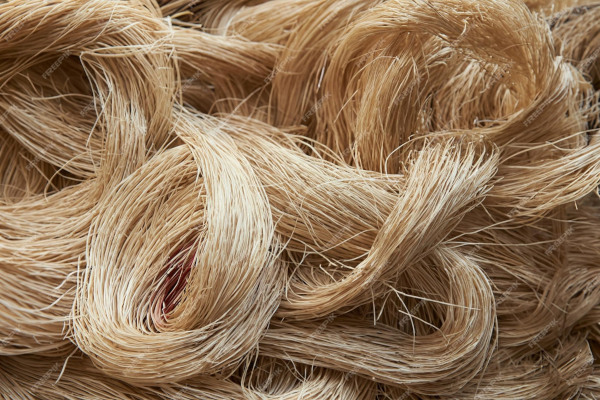Sisal Fiber
Sisal Fiber
Buy Sisal Fiber Wholesale

Sisal fibre is one of the most widely used natural fibres and is very easily cultivated. Nearly 4.5 million tons of sisal fibres are produced every year throughout the world. Tanzania and Brazil are the two main producing countries.
Sisal fibre is a hard fibre extracted from leaves of the sisal plant. A sisal plant produces between 200 and 250 leaves and each leaf contains between 1000 and 1200 fibre bundles, which are composed of: 4% fibre, 0.75% cuticle, 8% dry matter and 87.25% water [57]. Therefore, a leaf which weighs about 600 g will yield about 3% by weight of fibre with each leaf containing ∼1000 fibres. The advantages of sisal fibres are: they have good resistance against moist, heat and short fibres delay restrained plastic shrinkage thereby controlling crack development at early ages. In developing countries, sisal fibres are used as reinforcement in houses.
Advantages and disadvantage of sisal fibers
- •
Sisal is one of the most widely used natural fibers and is very easily cultivated.
- •
It possesses high strength, durability, ability to stretch, affinity to dyes, and resistance to deterioration in salt water.
- •
Sisal fibers are smooth, straight, coarse, and inflexible.
- •
It can be used alone or blended with wool or acrylic.
- •
It has short renewal times and grows wild in the hedges of fields and railway tracks.
- •
Nearly 4.5 million tons of sisal fibers are produced every year throughout the world. Sisal represents 2% of the world’s population of plant fibers.
- •
No pesticides or chemical fertilizers are used in sisal production.
- •
Sisal cultivation as a fiber crop does not cause environmental degradation.
A disadvantage of the sisal fibers is that they absorb air humidity causing expansion and contraction of products made from sisal fibers. They are also prone to microbial attack when wet and degrade when exposed to heat, light, and ultraviolet radiation.
Request Inquiry
Ready to order? You can request an inquiry from us!
